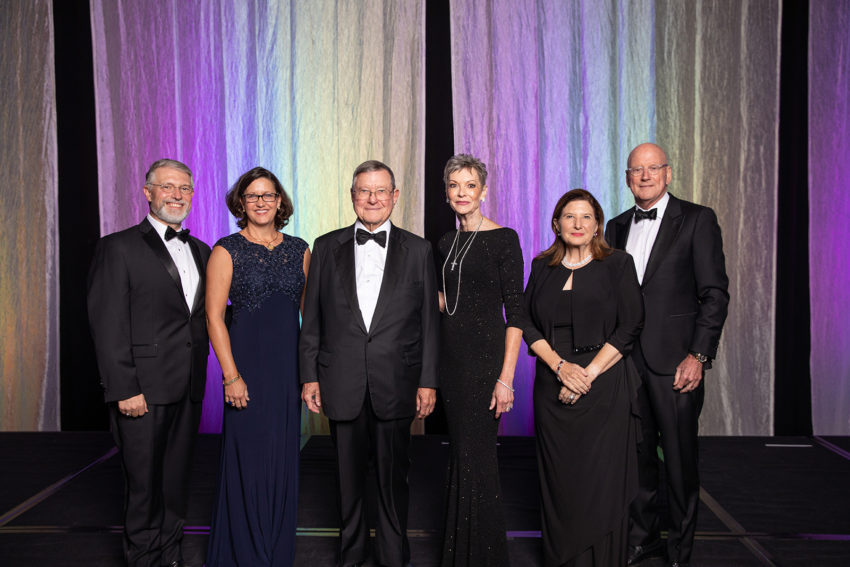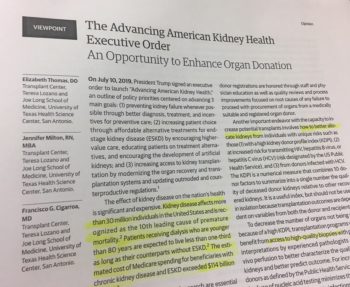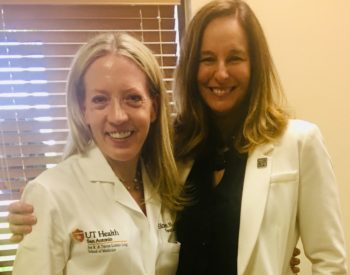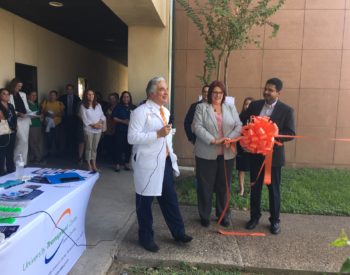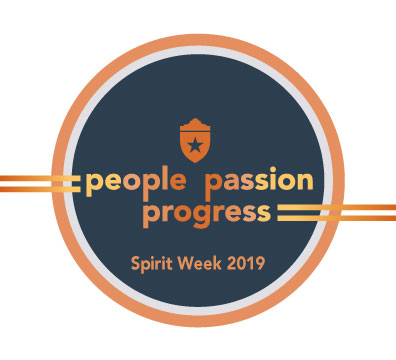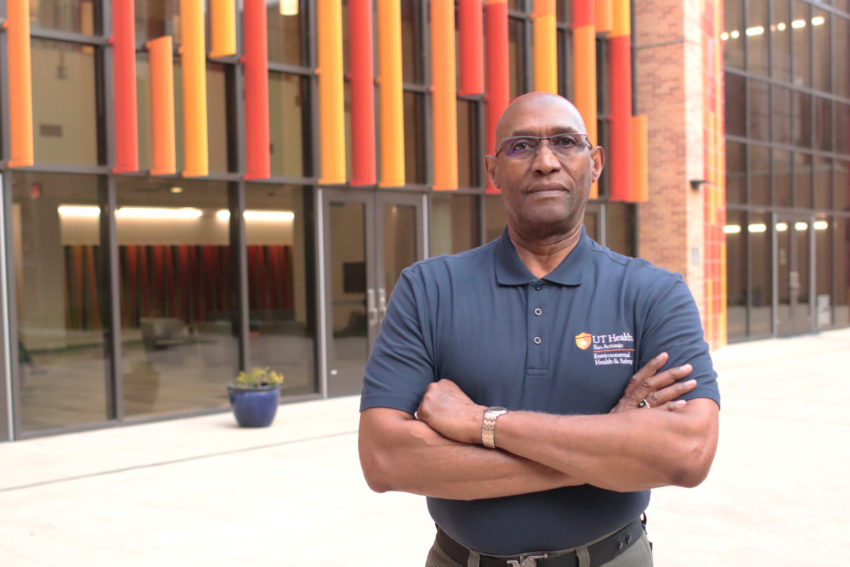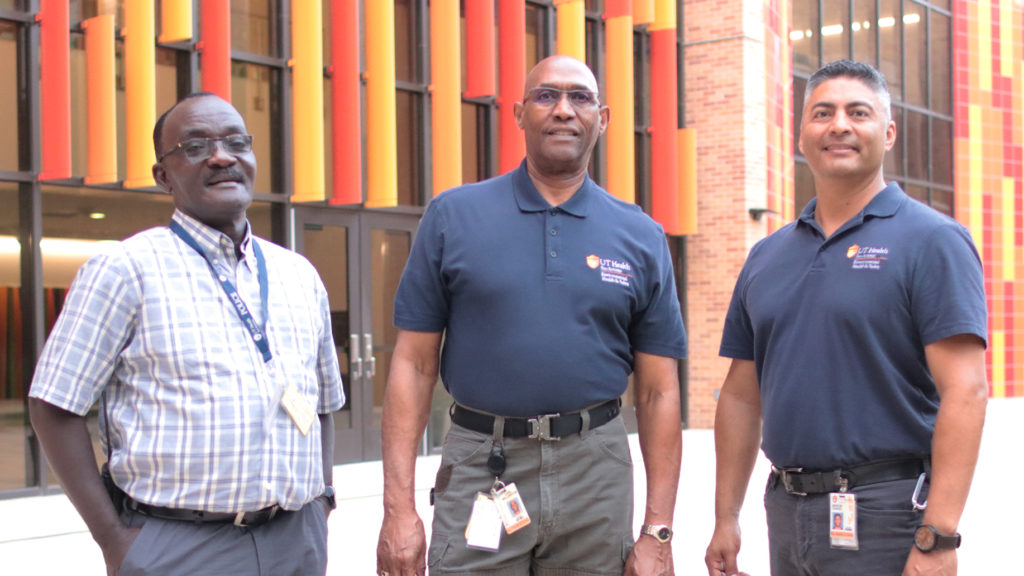UT Health San Antonio honored philanthropists Karen and Ronald Herrmann at the annual President’s Gala on Sept. 21.
A record attendance of 1,800 guests, including more than 700 UT Health San Antonio students, helped raise over $500,000 to establish the Karen and Ronald Herrmann Endowment for Research to Advance Excellence in Caregiving.
This endowment will support innovative research to develop and test new models of care, clinical trials, intervention delivery and emerging technologies to address the needs of diverse caregiving families in South Texas.
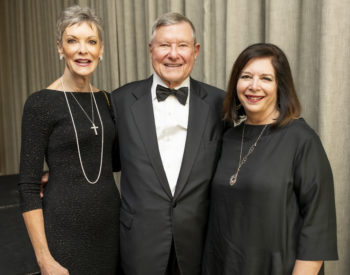
The gala also marked the 50th anniversary of the School of Nursing at UT Health San Antonio and its continued service to the South Texas community.
In a surprise announcement, UT Health San Antonio President William L. Henrich, M.D., MACP, told the crowd that the Herrmanns have given $1 million to establish in the School of Nursing the Karen and Ronald Herrmann Distinguished Chair in Caregiver Research.
“This exceptional generosity will forever be a notable milestone in the school’s history and will catalyze needed research on how best to support those who will serve as caregivers in the future,” Dr. Henrich said.
Dr. Henrich praised the Herrmanns for their passion and community service.
“Each of them has left an indelible mark on the thousands of people who know and love them and the numerous organizations, in San Antonio, Texas and our nation, for which they have served as volunteers and generous supporters,” he said. “Their passion and longstanding support have extended to a wide range of organizations whose missions include education, health, arts, wildlife conservation and historical preservation. We at UT Health San Antonio are very proud and extremely honored to have been beneficiaries of not only their treasure, but of their time and friendship.”
Baylor graduate Karen Herrmann has served on the School of Nursing’s Advisory Council and is a member of the board of governors of the Mays Cancer Center, among many other volunteer and philanthropic endeavors.
Ronald Herrmann, a St. Mary’s University undergraduate and law school graduate, “has committed himself to countless professional, civic and charitable organizations over his lifetime,” Dr. Henrich said. He is “an active conservationist, bird hunter, fishing enthusiast, outdoorsman, historian and world traveler.”
Dr. Henrich also recognized and praised faculty and alumni of the School of Nursing.
“Thank God for our School of Nursing and all nurses everywhere who serve, along with all caregivers, the missions of care, education and research,” he said.
—
Excerpts from Dr. Henrich’s address:
“The Herrmann endowment—Endowment for Research to Advance Excellence in Caregiving—that we establish tonight focuses on the underappreciated topic of caregiving, as we aim to find ways to be more resourceful, more creative and more appreciative of the people whose lives are devoted to others. Tonight, as we celebrate the founding of our decorated nursing school 50 years ago, we marry two natural companions: the science of caregiving to the nursing profession. After all, nursing and care are the key components in healing. Anyone who has been hospitalized knows that, in a hospital, a patient spends under an hour a day with physicians, but 23 hours with nurses.
“No one disputes the growing demand for caregivers and caregiving. But, you might ask, what characteristics define the very essence of the best care? What is it that cements the bond between patient and caregiver and then propels both participants to triumph over debilitating illness, depression and anxiety? My answer is that at the core of the best care is human kindness, itself animated by empathy and by love.
“Kindness is evident and effective in many forms – a simple touch, a smile, maybe a kind word. And it must be remembered that nurses and all health professionals who provide such care take an inviolable and sacred oath to render care to everyone, to abide by the precept that each human life is precious.
“We would be wise to follow the vocation that nursing teaches and become caregivers ourselves—and in doing this we must remember also to be caregivers to all. Because everyone counts. Everyone matters. There are no exceptions.
“The following video offers three short examples of human kindness in action, as it pays tribute to the profession, the calling, that is nursing.”
We extend heartfelt thanks to the cast members in our 2019 UT Health San Antonio President’s Gala video:
Irene Sandate, DNP, RN, UT Health San Antonio School of Nursing Classes of 1995 (MSN) and 2018 (DNP)
Monica Tellez, RN, UT Health San Antonio School of Nursing Class of 2017 (BSN)
Carole White, Ph.D., RN, UT Health San Antonio School of Nursing, Professor, Nancy Smith Hurd Chair in Geriatric Nursing and Aging Studies
Kiki and Michael Foster, UT Health San Antonio School of Nursing Caring for the Caregiver Stakeholder Alliance Council
Natasha Bakunda, RN, UT Health San Antonio School of Nursing Long Scholar, MSN candidate, Class of 2020


